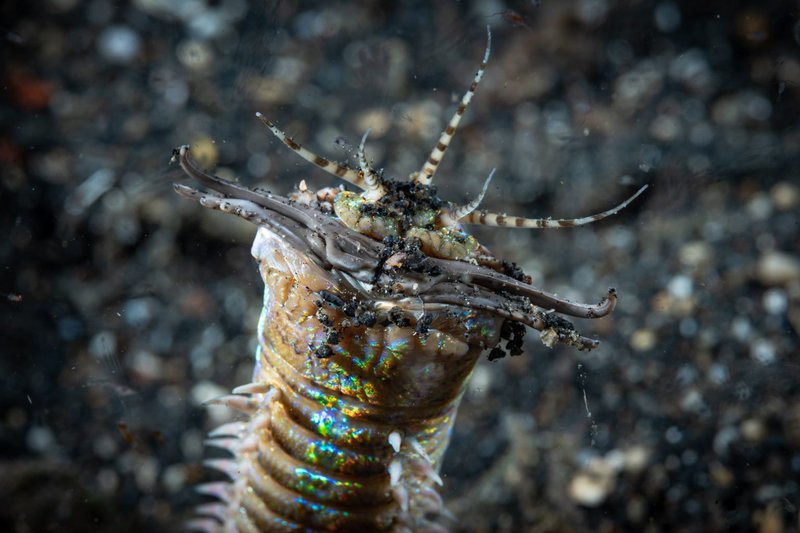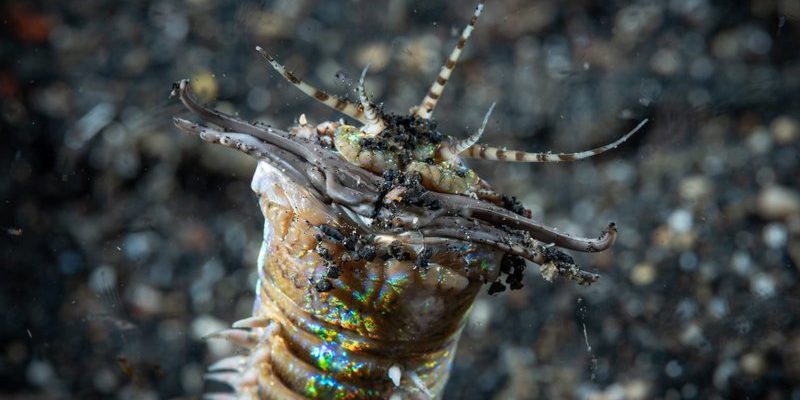
Bobbit worms, known for their long, segmented bodies and sharp jaws, are essentially the sharks of the worm world. They live in burrows within the seafloor, effectively camouflaging themselves to ambush unsuspecting prey. But like all predators, they’re not invincible. Just as lions have their own set of challenges in the wild, Bobbit worms also face threats from other marine creatures. In this article, we’ll uncover who their **natural enemies** are and how these interactions shape their behavior and habitat.
What Makes Bobbit Worms Unique?
Before we dive into the predators that threaten them, it’s essential to understand what makes Bobbit worms stand out. They belong to the family Eunicidae and can grow up to 10 feet long! Imagine that—creatures that can rival the length of a car. Their bodies are segmented and covered in bristles, which help them navigate their environment. But it’s their **jaws** that truly make them formidable. With sharp, scissor-like teeth, Bobbit worms can snatch up prey in a flash.
The way Bobbit worms hunt is equally fascinating. They lie in wait, using their camouflage to blend into the surrounding sand or mud. When a fish or other small creature swims too close, the Bobbit worm launches an attack, pulling its prey into its burrow. This allows them to feast on a variety of animals, including fish, crustaceans, and even other worms. Imagine being their prey—a swift, deadly lunch date!
Understanding these unique traits helps explain why they have so few enemies. After all, you don’t mess with something that has such an arsenal of hunting techniques. But as we’ll see, they do have some competitors and predators of their own.
Natural Predators of Bobbit Worms
Believe it or not, Bobbit worms aren’t at the top of the food chain. Several creatures consider them a delicacy. Some of the natural predators of Bobbit worms include:
- Fish: Certain larger fish species, like groupers and snapper, have a taste for these worms.
- Sea Stars: Some sea stars (starfish) are known to pry Bobbit worms from their burrows.
- Crustaceans: Larger crabs may also feed on smaller Bobbit worms.
These predators typically use different strategies to hunt down Bobbit worms. Larger fish may hunt them down during their swimming patterns, while sea stars use their tube feet to create suction and pull the worm out of its burrow. It’s a tough life for the Bobbit worm, knowing it can never let its guard down.
The Role of Competition in Marine Ecosystems
It’s not all about predation; competition is a significant factor in the lives of Bobbit worms. They often share their habitat with other marine organisms that might not directly hunt them but can still pose a challenge. For instance, other types of tube worms can compete for space and food resources.
Think of it like a neighborhood where multiple families want to occupy the same plot of land. If one family builds a larger, more intricate home, they may take over the area and make it difficult for others to thrive. Bobbit worms must constantly ensure they have enough territory to hunt and hide. This competition can lead to shifts in population dynamics, influencing how many Bobbit worms live in a given area.
Survival Strategies of Bobbit Worms
With predators and competitors around, survival isn’t easy for Bobbit worms. They have several strategies to help them stay alive and thrive in their environment. Here are a few key tactics:
- Camouflage: Their ability to blend into the sea floor allows them to avoid detection. If a predator can’t see them, it can’t eat them!
- Quick Strikes: When hunting, Bobbit worms can launch a fast attack. This surprise element makes it hard for prey—and sometimes predators—to escape.
- Burrowing Habits: By living in burrows, they create a safe space where only certain predators can reach them. This burrowing behavior acts as a sanctuary.
These survival mechanisms highlight just how resilient Bobbit worms are. Nature has equipped them with clever tools to navigate their dangerous world, but it’s a constant battle.
How Climate and Habitat Affect Predator Relationships
Climate change and habitat alterations are real threats to Bobbit worms and their relationships with predators. Ocean temperatures, salinity, and pollution can all impact marine ecosystems. For example, warmer waters can lead to a decline in fish populations that prey on Bobbit worms, which may sound good but can disrupt the balance of the ecosystem.
Changes in habitat can also create challenges. For instance, if coral reefs degrade, the surrounding areas may not be as rich in prey for Bobbit worms. This could lead to a decrease in their population as they struggle to find food. When the delicate dance of predator and prey shifts, entire food webs can alter dramatically, affecting countless marine species.
The Bigger Picture: Bobbit Worms in the Marine Ecosystem
Understanding Bobbit worms and their predators isn’t just about knowing who eats whom. It’s about recognizing their role in the larger ecosystem. Bobbit worms contribute to sediment aeration and nutrient cycling. They help keep ocean environments healthy by breaking down organic materials.
When Bobbit worms thrive, they provide food for larger marine animals, fostering biodiversity. On the other end of the spectrum, if their numbers decline, it could have ripple effects that reach far beyond their immediate environment. It’s like a chain reaction—each link affects the next.
Bobbit worms are a striking example of nature’s complexity. While they are formidable predators in their own right, they also find themselves on the menu for various marine creatures. Their unique adaptations help them survive in a world filled with challenges from both predators and competitors.
The relationship between Bobbit worms and their natural enemies showcases the intricate balance within marine ecosystems. Each creature plays a vital role, contributing to the thriving underwater world. Understanding this balance helps us appreciate the delicate nature of life beneath the waves. So the next time you think of the ocean, remember the Bobbit worm and the fascinating interactions that keep the marine food web alive and well.

